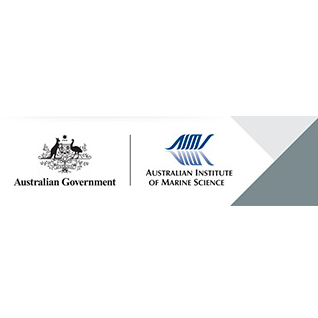Brief description
In July 2004, dictyoceratid sponges were surveyed in the vicinity of two islands in western Torres Strait (Badu Island and Thursday Island (Waiben)) and two islands in eastern Torres Strait (Yorke Island (Masig) and Darnley Island (Erub)). These locations were between 50 and 220 km apart.Six sites were surveyed at Darnley, 5 sites at Yorke and 7 sites each at Badu and Thursday. At each location, sites were surveyed close to the main community and on neighbouring islands. Sites within each location were 2 to 27km apart.At each site, four 50 x 2 m haphazardly placed belt transects, separated by at least 30m, were surveyed following a constant depth profile or compass bearing. All transects were between 5 and 15m depth. All dictyoceratid sponges found within 2m of one side of the 50m long transect line were counted, identified where possible and assigned a size category (small 20 cm). For dictyoceratid sponges that were not positively identified underwater, a small tissue sample was collected and preserved in alcohol for later taxonomic analysis. Voucher specimens of all dictyoceratid sponges were collected to confirm field identification. A general survey of the area was also carried out to find any dictyoceratid species not recorded in the transects. Underwater photographs were taken of representative specimens of all known and new species encountered.General habitat features were recorded for each transect. These included dominant organisms (e.g. hard coral, sponges); depth; substrate type (solid rock, rubble and sand; categorised as 0=0-1%, 1=2-35%, 2=26-50%, 3=51-75%, 4=75-100%); rock slope (1=1-30°, 2=31-60°, 3=61-90°). Ambient water temperature and salinity (measured with a refractometer) were also recorded at each site. Light intensity was not measured because sites were surveyed at different times during the day.To examine spongin quality, tissue samples were collected, killed and then left in sea water for 2-10 days until its mesohyl (living tissue) had disintegrated and fallen off leaving behind a clean spongin skeleton. Surveys were undertaken to examine spatial variability in community structure of dictyoceratid sponges in Torres Strait with the aim of identifying possible locations for farming Dictoceratida (bath) sponges. Spongin quality of Torres Strait Dictyoceratida sponges was examined to identify species suitable as candidates for commercial bath sponge aquaculture. This research formed part of the CRC Torres Strait Project T1.6a: Exploring the potential of bath sponge aquaculture in Torres Strait.Lineage
Maintenance and Update Frequency: notPlannedNotes
CreditDuckworth, Alan R, Dr (Principal Investigator)
Modified: 17 10 2024
text: westlimit=143.769111; southlimit=-9.588364; eastlimit=143.769111; northlimit=-9.588364
text: westlimit=143.406547; southlimit=-9.75319; eastlimit=143.406547; northlimit=-9.75319
text: westlimit=142.144529; southlimit=-10.110308; eastlimit=142.144529; northlimit=-10.110308
text: westlimit=142.218427; southlimit=-10.5797; eastlimit=142.218427; northlimit=-10.5797
Distribution and abundance of bath sponges in Torres Strait. Prepared for the Torres Strait Regional Authority & CRC Torres Strait: Duckworth AR, Wolff CWW and Evans-Illidge EA (2005) Distribution and abundance of bath sponges in Torres Strait. Prepared for the Torres Strait Regional Authority & CRC Torres Strait. Australian Institute of Marine Science. 23 p.
local : articleId=7016
Map
uri :
https://data.aims.gov.au/mestmapkml/ba648693-b20f-46dc-86b6-f950b95378a0.kml![]()
Effective communication tools to engage Torres Strait Islanders in scientific research: Jones A, Barnett B, Williams AJ, Grayson J, Busilacchi S, Duckworth AR, Evans-Illidge EA, Begg GA and Murchie CD (2008) Effective communication tools to engage Torres Strait Islanders in scientific research. Continental Shelf Research 28: 2350-2356.
local : articleId=7861
Spatial variability in community structure of Dictyoceratida sponges across Torres Strait, Australia: Duckworth AR, Wolff CWW, Evans-Illidge EA, Whalan S and Lui S (2008) Spatial variability in community structure of Dictyoceratida sponges across Torres Strait, Australia. Continental Shelf Research 28: 2168-2173.
local : articleId=7525
Exploring the potential of bath sponge aquaculture in Torres Strait: Duckworth AR, Wolff CWW, Evans-Illidge EA, Morris J, Lowatta S, Naawi S, Lowatta P and Mosby P (2007) Exploring the potential of bath sponge aquaculture in Torres Strait. CRC-TS Task Number: T1.6a. Australian Institute of Marine Science. 48 p.
local : articleId=7417
- global : ba648693-b20f-46dc-86b6-f950b95378a0


